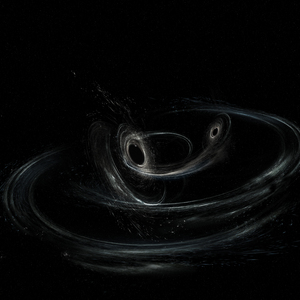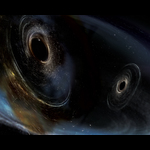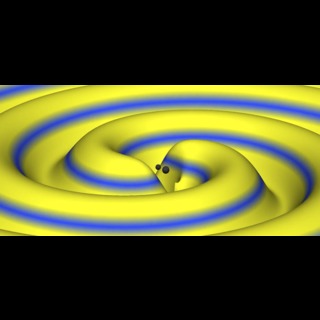Simulation of GW170104
This animation shows the inspiral and merger of two black holes with masses and spins consistent with the GW170104 observation.
The top part of the movie shows the black hole horizons (surfaces of "no return"). The initial two black holes orbit each other, until they merge and form one larger remnant black hole. The shown black holes are spinning, and angular momentum is exchanged among the two black holes and with the orbit. This results in a quite dramatic change in the orientation of the orbital plane, clearly visible in the movie. Furthermore, the spin-axes of the black holes change, as visible through the colored patch on each black hole horizon, which indicates the north pole.
The lower part of the movie shows the two distinct gravitational waves (called 'polarizations') that the merger is emitting into the direction of the camera. The modulations of the polarizations depend sensitively on the orientation of the orbital plane, and thus encode information about the orientation of the orbital plane and its change during the inspiral. Presently, LIGO can only measure one of the polarizations and therefore obtains only limited information about the orientation of the binary. This disadvantage will be remedied with the advent of additional gravitational wave detectors in Italy, Japan and India.
Finally, the slowed-down replay of the merger at the end of the movie makes it possible to observe the distortion of the newly formed remnant black hole, which decays quickly. Furthermore, the remnant black hole is "kicked" by the emitted gravitational waves, and moves upward.
- Date
- June 1, 2017
- ID
- ligo20170601v2
- Type
- Science
- Credit
- SXS Collaboration















